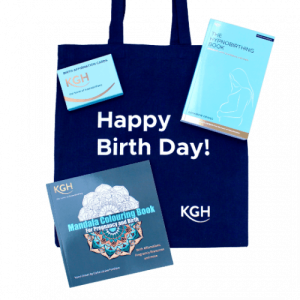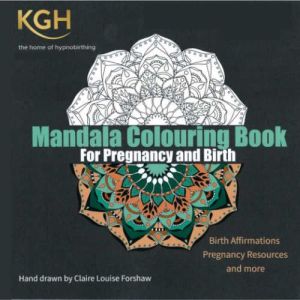Most people will fill out a birth plan with their midwives midway through their pregnancy. It is a way of registering your preferences for the process of your labour so that your wishes can be carried out whilst you concentrate on relaxing, breathing and focusing on the birth of your baby.
Our ethos is to encourage natural childbirth and empower you to be in control of this process, so we have put together a number of options for you to discuss with your midwife and add to your birth plan if you wish. We have given a short account of the advantages of certain choices. This will be covered to a greater extent on the course, and please feel free to drop me an email or call if you want to discuss any of these areas.
Your environment
A quiet and calm environment where you feel safe and confident will help keep you relaxed and let your labour develop quickly and smoothly. It is easier to create this environment in your own home (or in a Birthing Centre) but points to consider include:
- Peace and quiet
- Subdued lighting
- Soft lulling music in the background (check if there is a CD player, or else bring your own)
Natural Birth
If you plan on taking a course and practising for a Hypnobirthing Birth it is a good idea to let the midwife who attends you know this so she can be fully supportive. Whilst Hypnobirthing is becoming more widespread there are still a number of health professionals who have not had any experience of the process, although my experience is that they are generally interested and supportive. Simply it empowers you to have a calm and gentle, natural and drug free birth, and uses self hypnosis, breathing, and deep relaxation and visualisation techniques.
It is best if you request patience and understanding to refrain (in the absence of medical emergency) from any intervention, or any procedure that could unnecessarily stand in the way of you having the most natural birth possible. It is good to state this clearly on your birth plan.
Activity During Labour
Although gentle movement can be beneficial in the early stages of labour, please bear in mind that you need to conserve your energy for actual birth of your baby. Eating whatever snacks appeal to you in the early stages of labour helps to maintain your energy. Remember that the muscles of the uterus are some of the strongest muscles in the human body and they are working to capacity. Labour can be entirely comfortable and, at the same time, the muscular effort is powerful.
Vaginal Examinations
If you prefer to be undisturbed, you can decline an internal examination with no risk to yourself or your baby in normal circumstances.
Monitoring Your Babies Hearts
Your baby’s heart can be monitored by Doppler ultrasound or with a stethoscope if you prefer not to expose your baby to the risks of sonar.
Positions to Give Birth in
There are a variety of positions you can give birth in but ultimately you’ll do what you feel like at the time. Many women find that a vertical, slightly forward position is the most comfortable, so that the weight of the baby is not pressing on your circulatory and nervous systems, gravity is on your side, and the capacity of the pelvis is at its maximum.
Popular positions include:
- Squatting
- Leaning forward (the kitchen work surface is a good height if you’re at home)
- Standing – perhaps supported with your arms round your husband’s / partner’s neck
- In a birthing pool
Birthing Pool
Birth pools were pioneered by Michel Odent in the 1970s on the grounds that a baby had been in ‘water’ for the last nine months and so would find it a more gentle introduction to the world. Many mothers also find this a comfortable way of giving birth.
Skin to skin contact with your baby
Immediately after your baby is delivered (s)he can be placed on your tummy giving skin to skin contact. This is very beneficial because the only things in the baby’s new world that it recognises from it’s old world are it’s mother’s skin, it’s mother’s heartbeat and breathing, and it’s mother’s and father’s voices. It helps to build the bond between mother and baby, and to establish breast feeding. You should allow the vernix to be absorbed into baby’s skin so there is no need for any cleaning or rubbing. It can be done later if needed with a soft cloth.
Delivery of your placenta
In hospital directly after the birth a mother will often be offered an injection of artificial oxytocin. The purpose of this is to causes uterine contractions and to prevent or stop postpartum haemorrhaging and help with a fast delivery of the placenta. However evidence shows that this may be an unnecessary procedure in many women and may inhibit the production of natural oxytocin. It is often routinely being used without full knowledge of the mother. The choice is yours, and it is wise to do some research beforehand. This is one of the many subjects which are discussed in a Hypnobirthing course.
A drug free and natural way for your body to achieve the same process as above is to immediately breast feed your baby which will assist with the natural delivery of your placenta, as well as give your child the sustenance and comfort it needs at the beginning of life.
Special Requests
A few other ideas you might like to consider:
- you would like your partner to tell you if it is a boy of a girl
- birth partner to remain with me during and after the birth
- I would / would not like trainee doctors, nurses to observe my labour
- Allow baby and father to remain with me after birth
- A soft cloth or pad between baby and scales
Vitamin K for your baby
Vitamin K is offered for babies and again the choice is yours. It can be given by injection after they are born which helps prevent a rare disease called Vitamin K deficiency bleeding, or it can be given orally in several doses after the baby is born which saves the baby from an injection within the first few hours of arriving in this world. If the oral course is chosen instead it is essential that it is completed in full. Many midwives consider that Vitamin K is unnecessary if there has been no trauma during labour and birth.
Cutting the Cord
Delaying the cutting of the cord until the pulsating has stopped will enable the full supply of oxygenated blood to reach the baby and provides a dual support system while your baby learns to take its first breaths.
Breast Feeding
We encourage you to breast feed several times during the first few hours after birth. It’s a wonderful way of establishing your bond with your baby.
Medical Intervention
Interventions can be life-savers in an emergency situation, and unnecessary interventions can themselves create unnecessary problems; something to be considered carefully and researched in advance. We highly recommend the website www.aims.org.uk
Pain Relief
There are a number of different pain relief options and many women use a combination of them. To enjoy a natural and comfortable birth, a Hypnobirthing Course will go a long way to helping a mother have a calm and gentle birth. Thank goodness pain relief is available, but many Hypnobirthing mothers find it is not needed as birth can be comfortable and calm.
Natural Induction
Induction is now often offered as standard, and often presented as if you have no choice. Remember you are entitled to a full discussion and explanation of the pros and cons before you decided on any intervention. Always listen carefully to medical advice; your midwives and doctor are knowledgeable and experienced, but remember that it is ultimately your decision.
We will be discussing many of these topics on the hypnobirthing course in more depth and hope this has given you some food for thought at this exciting time.









